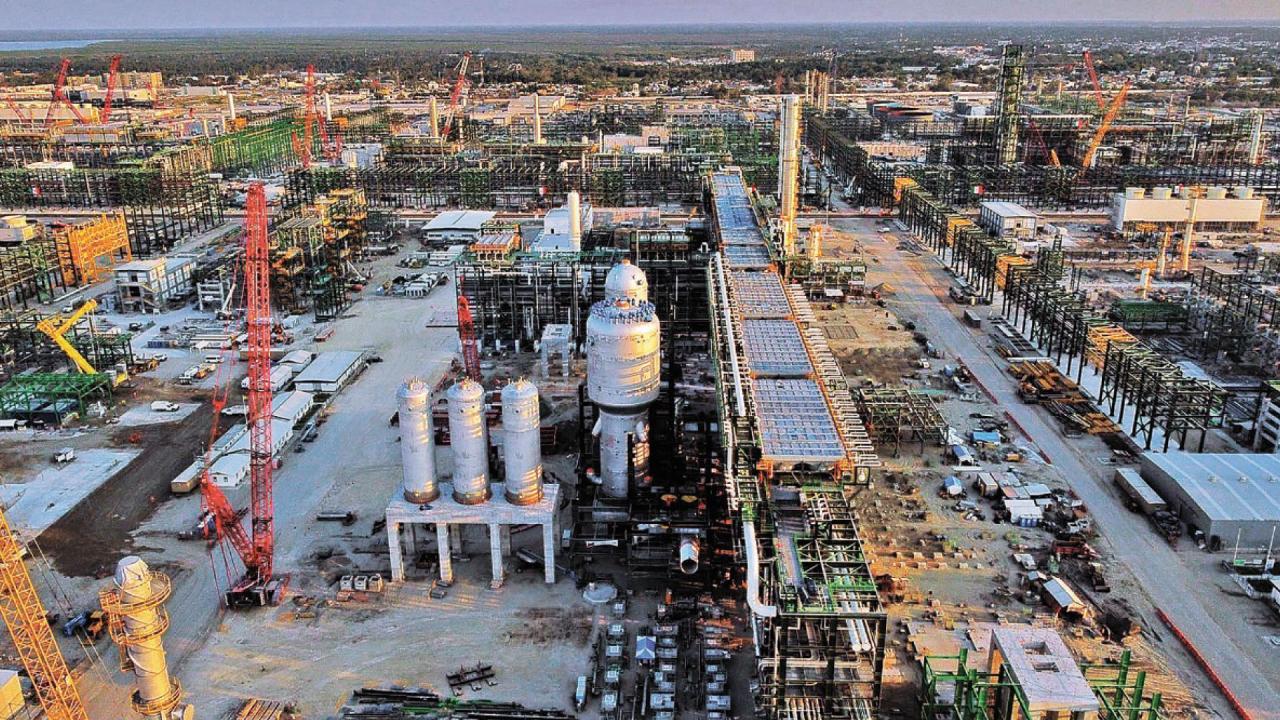
In September, the state-owned company produced 475,000 barrels per day locally, which is less than half of what it had projected just three months earlier.
The six-year term of former Mexican President Andrés Manuel López Obrador has come to a close, leaving pending the fulfillment of his goal of self-sufficiency in terms of fuel consumption. And the gap between reality and desires has turned out to be significant.
Last September, Petróleos Mexicanos (Pemex) produced, in round numbers, 475,000 barrels of gasoline, diesel and jet fuel per day in its Mexican refineries, that is, less than half of the little more than a million barrels per day that, as recently as last July, the former director of the company, Octavio Romero, promised to achieve.
If we add to those 475,000 barrels the production of Pemex's Deer Park refinery in Texas, equivalent to 278,000 barrels, we obtain a product of 753,000 barrels per day, which is also 41% lower than what Romero Oropeza promised as Pemex's total production just over three months ago.
“In December 2018, 304,000 barrels were produced in the six refineries; in September, when the administration ends, we will be producing (including Deer Park) 1,268,000 barrels of gasoline, diesel and jet fuel, and in the first quarter of 2025 almost 1,300,000,” said the current general director of the National Workers Housing Fund Institute (Infonavit) during his speech at López Obrador’s morning press conference on July 19.
In his presentation, the official specified that in Mexican refineries alone, including the new Olmeca complex, September production would be 1,026,000 barrels per day.
"Little by little, during this administration we have stopped buying, so that when we get to September only 52,000 barrels a day will be purchased," said Romoero Oropeza.
He assumed that the refinery located in Paraíso, Tabasco, would already be working at its maximum capacity, processing 340,000 barrels per day, of which about half would be transformed into gasoline.
However, on Tuesday Pemex reported a meager production of 1,549 barrels of gasoline per day and 3,492 barrels of diesel per day in the Tabasco complex, 85% and 87% less than the figures for August, respectively.
For analyst Ramsés Pech, the above, added to the fact that Pemex reported a zero crude process at the Olmeca refinery, allows us to assume that the complex is still in the testing phase, despite the fact that López Obrador led an act of inauguration of commercial operations at the beginning of last August.
“It has been confirmed that Dos Bocas is in the testing phase. In September, no barrels of crude oil were refined, according to information from Pemex. Some barrels of gasoline and diesel were produced, but derived from tests with gasoline and diesel streams,” he said.
On the other hand, crude oil processing at the oil company's other six refineries was not any better. During the ninth month of the year, it fell 4.8% monthly to 863,000 barrels per day, the second lowest level of the year.
On a monthly basis, domestic gasoline production fell by 15,000 barrels per day to 284,000; diesel production fell by 24,000 barrels to 164,000; and jet fuel production improved by 2,300 barrels to 26,700.
According to Pemex, investment in rehabilitating its refineries during the last six-year period amounted to 75 billion pesos (US$ 3.728 billion), however, its performance has fallen short of what the company had set out to achieve, although improvements such as the construction of coking plants at the Tula and Salina Cruz refineries are still underway.









